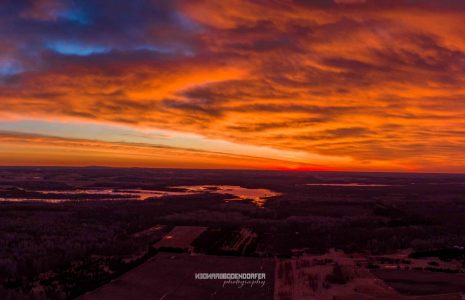Unwrapping Your Drone and First Flight!
Did you unwrap a Drone (sUAS) this Christmas? Before you take your first flight, there is several things to consider. The FAA has a designated page on their website for getting started: https://www.faa.gov/uas/getting_started/
FAA’s Small UAS Rule (Part 107), really changed much about remote flying and drone operation in August of 2016. A few things everyone would should know:
-
-
- Fly your drone at or below 400 feet
- Keep your drone within your line of sight
- Be aware of FAA Airspace Restrictions
- Respect privacy
- Never fly near other aircraft, especially near airports
- Never fly over groups of people, public events, or stadiums full of people
- Never fly near emergencies such as fires or hurricane recovery efforts
- Never fly under the influence of drugs or alcohol
-
There is two options to fly your drone illegally. Each option has its own set of regulations and requirements.
Option 1 – Fly under the Special Rule for Model Aircraft (Section 336)
This option is designed for hobby or recreational flyers. I have learned that a lot of people get confused by when they can fly as a hobbyist vs when they need a Remote Pilot Certificate from the FAA. The first thing I ask someone is; Are you flying for commercial use? If the answer is yes, then you need to get a Remote Pilot Certificate, commonly referred to as Part 107. I will mention below how I got my Part 107 and the process that I went through.
First what should a pilot consider when flying has a hobbyist?
- Fly for hobby or recreation ONLY
- Follow community-based safety guidelines and fly within the programming of a nationwide community-based organization
- Fly a model aircraft under 55 lbs. unless certified by a community-based organization
- Fly within visual line-of-sight
- Never fly near other aircraft
- Notify the airport and air traffic control tower prior to flying within 5 miles of an airport
- Never fly near emergency response efforts
Whenever you fly a drone, even if you are more than 5 miles from an airport it is likely that you will see other aircraft in the air at times. I encountered medical helicopters and/or small manned airplanes more often that I would’ve thought prior to becoming a pilot. So how do you maintain safety for the manned aircraft and yourself? Prior to taking off, I recommend finding two additional areas that you can safely hand or hover your drone, other than where you took off, that is in your flight path. This will give you more options to consider while in flight. In the event that another aircrafts enters the airspace you are flying, can yield to the aircraft and move to one of your safe locations. I often reduce my attitude below tree level as an addition measure of safety.
In addition to aircraft entering your airspace, its important to consider that you are flying outdoors and in most cases you are in a public place. Be mindful of people that may enter your flight path. The FAA clearing states that you can not operate directly over people. Having determined additional locations to land/hover, you will have a safe place to move your drone to, if people enter your area of flight.
Option 2 – Fly under the FAA’s Small UAS Rule (Part 107)
This option is designed for recreational or commercial flyers. The best way to define a commercial flyer is someone whom is doing work for hire, or someone who is using the drone for an application in association with their business. A recreational flyer may want to obtain their Part 107, so they are able to apply for waivers or be able to fly in Class G airspace within 5 miles of an airport, without having to call per flight.
- Fly for recreational OR commercial use
- Get a Remote Pilot Certificate from the FAA
- Fly a drone under 55 lbs.
- Fly within visual-line-of-sight*
- Don’t fly near other aircraft or over people*
- Don’t fly in controlled airspace near airports without FAA permission*
- Fly only during daylight or civil twilight, at or below 400 feet*
* These rules are subject to waiver.
Follow me on Facebook and subscribe to my YouTube channel as I continue to give more tips and information on becoming an expert sUAS pilot.
In additional blogs, I will cover topics such as but not limited too:
Preflight Operations, Post-Flight Maintenance, Battery Maintenance, Lost Drone, Best Practices for Video and Photography.







